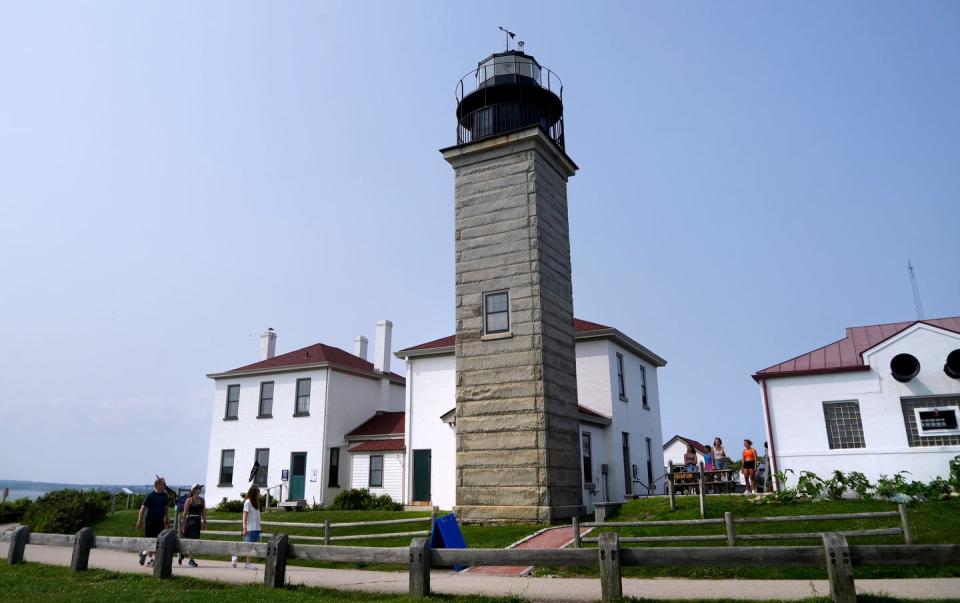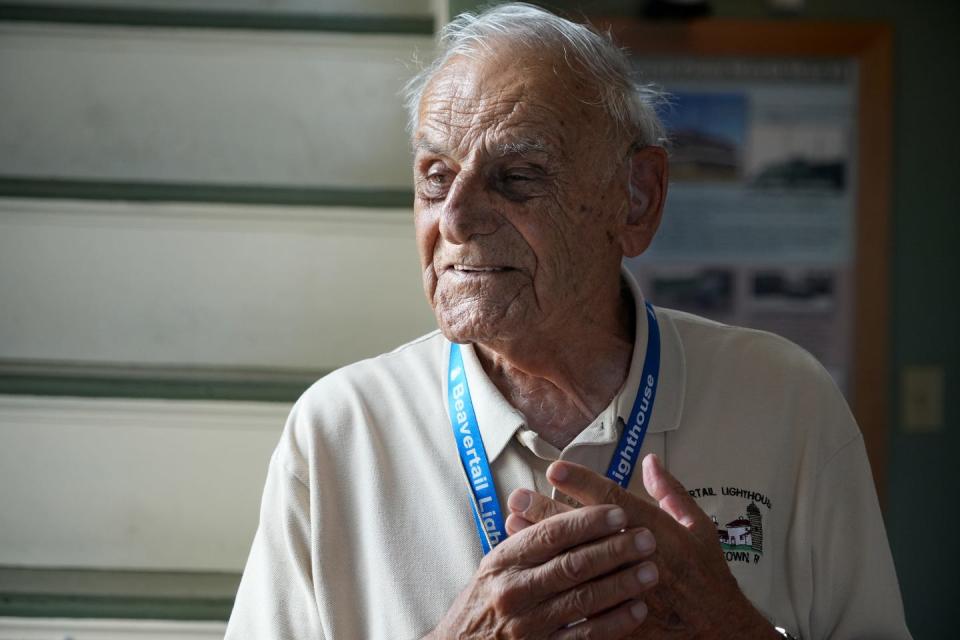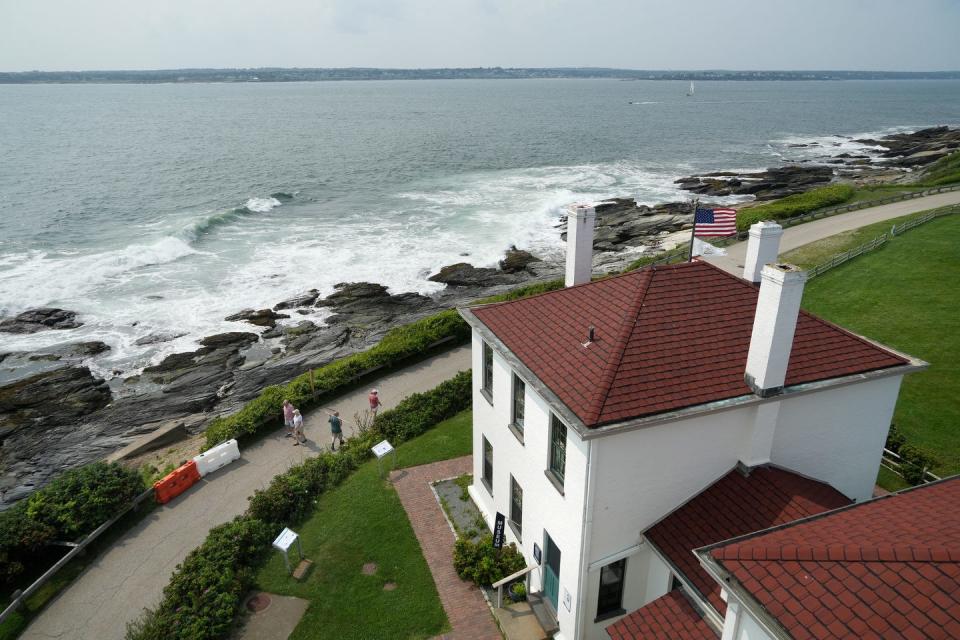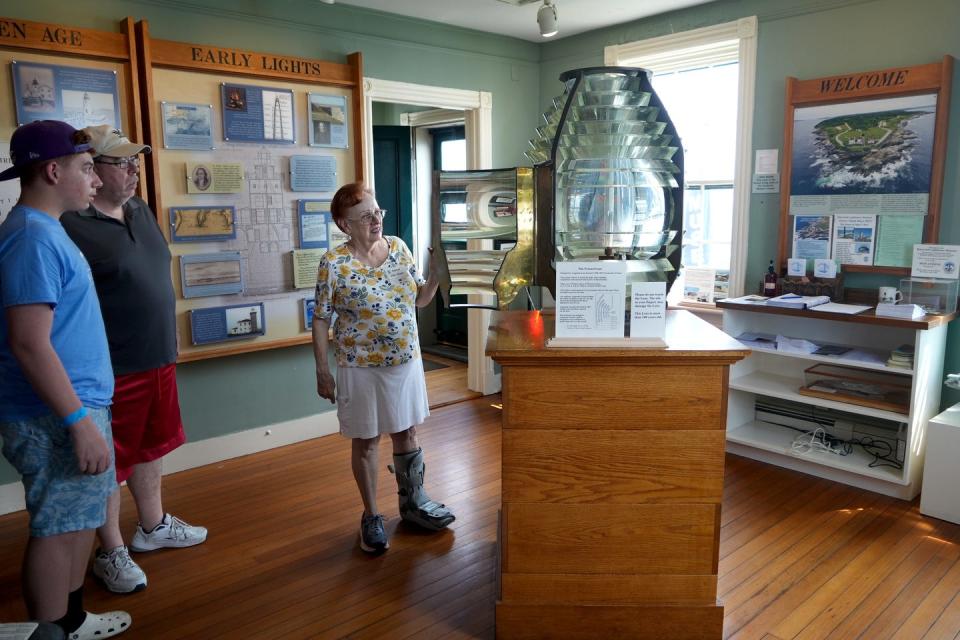What's next for Beavertail Lighthouse when Rhode Island takes ownership from the feds?
JAMESTOWN – From the top of the Beavertail Lighthouse in Jamestown, on a clear day the vistas expand to Martha's Vineyard and Block Island.
For Varoujan Karentz, the hike up the spiral stairs and then the climb up a ladder to get into the top of the lighthouse isn't worth it anymore. Karentz, in his 90s, is one of the founding members of the Beavertail Lighthouse Museum Association, and since the group's founding in 1993 he has been integral in keeping up the lighthouse and its expansive and interactive exhibits. Work to create a museum was begun in 1983 by the Rhode Island Parks Association.
Soon, the lighthouse – the third-oldest in North America – will change hands. Now the property of the federal government, it will be transferred to the state Department of Environmental Management, which manages Beavertail State Park, the grounds around the lighthouse.
The National Park Service recommended earlier this month that the DEM be given the property after it applied in 2021, an application that Karentz helped draft. The lighthouse is the subject of a three-way memorandum of understanding between Jamestown, the state and the museum association.
Molly Ogren, who wrote the application for the DEM, said many in her office weren't surprised the National Park Service chose them to get custody of the lighthouse. But she was.
"I did call the deputy director, screaming, after hours," she said. "I was screaming because I'd worked so hard on this application, so I called my boss, literally screaming, and he calmly said, 'This is fantastic news.' He had a sense this was going to happen."
Now the state, the town and the museum association are all waiting for the General Services Administration, which disposes of federal property, to hand over the deed to the property.

"Right now, it's hurry up and wait," Ogren said.
Karentz said he remembered getting the letter from the National Park Service and seeing it was signed by the department's top boss, Secretary of the Interior Deb Haaland. While he has been intimately involved with the museum and lighthouse for years, he said its custody was best given to the state.
"We're just an organization, so if we go flop, who would have had the property?" he said.

Museum holds interactive displays, database of shipwrecks
While the view from the top of the lighthouse is beautiful, inside the lighthouse keeper's house, and the assistant keeper's house, the museum association has created a bevy of interactive displays, including a database of all the documented shipwrecks, crashes and other incidents.
That database took 10 years to collate and contains information on 3,500 incidents, each with a one- to two-page information sheet, Karentz said. He is also proud of an interactive display on the Fresnel lens.

"I don't know of any other location, now, that has this," he said.
The DEM runs a small aquarium, which includes a horseshoe crab, in the former foghorn building. Two giant funnel-shaped horns that blasted out the warning have been restored, while some of the original ductwork for the steam-powered device hangs above the aquarium area.
Karentz said his hope is to one day return the foghorn building to its original state.
The history of the Beavertail Lighthouse
The lighthouse's history dates back to 1712, with the first official request for a lighthouse, followed by a tariff to raise money in 1731 and construction of the first lighthouse, a wooden tower, in 1749. After that structure burned down, the second version was built in 1753, this time with a stone foundation.
In 1856, a third lighthouse was built 100 feet behind the second one. The deteriorating 1753 structure was taken down and a "fog-whistle house" was put in its place. The Great Hurricane of 1938 revealed the foundation of the original lighthouse, which had been forgotten.
In 1972, the beacon was automated, ending the tradition of light keepers. In 1991, the Fresnel lens was replaced with a rotating beacon, and the old one is on display in the museum.

The lighthouse and museum are open every day, 10:30 a.m. to 4:30 p.m., from June 19 through Sept. 4. In the fall, they are open on weekends from Sept. 9 through Oct. 8, as well as Columbus Day, Oct. 9.
The lighthouse tower is open to climb, from 1:30 to 4 p.m., on the following dates:
July 29
Aug. 7 (National Lighthouse Day)
Aug. 12
Aug. 26
Sept. 4 (Labor Day)
Sept. 23
Oct. 9 (Columbus Day)
Thanks to our subscribers, who help make this coverage possible. If you are not a subscriber, please consider supporting quality local journalism with a Providence Journal subscription. Here's our latest offer.
Reach reporter Wheeler Cowperthwaite at wcowperthwaite@providencejournal.com or follow him on Twitter @WheelerReporter.
This article originally appeared on The Providence Journal: Beavertail Lighthouse will pass from federal ownership to Rhode Island

